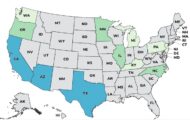Six years ago, the U.S. Department of Homeland Security proposed the creation of a national bio and agro defense facility (NBAF). The idea was that trough research and diagnostics, the facility could improve our ability to protect U.S. agriculture and public health from foreign animal disease and zoonotic diseases. The facility would be one of only four worldwide with the capacity to study large animals. The only problem was the price tag: $1.14 billion.
 So, Homeland Security asked the National Research Council (NRC) to examine how three options could address the threats to U.S. animal and public health. The first: build the facility as proposed for the full price. The second: build a scaled back version for less money. The third: continue to use the existing facility and rely on foreign sources for livestock laboratories.
So, Homeland Security asked the National Research Council (NRC) to examine how three options could address the threats to U.S. animal and public health. The first: build the facility as proposed for the full price. The second: build a scaled back version for less money. The third: continue to use the existing facility and rely on foreign sources for livestock laboratories.
In its newly released report, the NRC has thrown out the third option saying that relying on foreign lab space wouldn’t be prudent and that building a large animal space is an “imperative” component of the “the national infrastructure for protecting animal and public health.” The committee recommended continuing to fund operations at the aging Plum Island facility in New York, where some of this work is currently being done, until a new facility is operational. The NRC also recommended the exploration of other funding mechanisms to bolster current federal allocations for the new facility.
Whichever of the remaining two options is chosen, the NRC recommends that an integrated national system is developed. “The importance of having a strong national system to recognize and counter the threats posed by foreign animal disease and zoonotic diseases may not always be apparent when disease outbreaks are quickly identified, mitigated and contained, but the consequences of such outbreaks can be enormous if and when a system fails,” the report states. To read the 166-page report, visit the NAP site.




